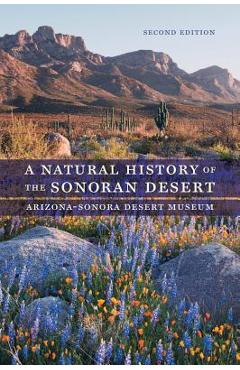A Natural History of the Sonoran Desert - Arizona-sonora Desert Museum

Detalii A Natural History of the
libris.ro
278.65 Lei
309.61 Lei
Nature
Arizona-Sonora Desert Museum
A Natural History of the - Disponibil la libris.ro
Pe YEO găsești A Natural History of the de la Arizona-Sonora Desert Museum, în categoria Nature.
Indiferent de nevoile tale, A Natural History of the Sonoran Desert - Arizona-sonora Desert Museum din categoria Nature îți poate aduce un echilibru perfect între calitate și preț, cu avantaje practice și moderne.
Preț: 278.65 Lei
Caracteristicile produsului A Natural History of the
- Brand: Arizona-Sonora Desert Museum
- Categoria: Nature
- Magazin: libris.ro
- Ultima actualizare: 05-06-2025 16:21:01
Comandă A Natural History of the Online, Simplu și Rapid
Prin intermediul platformei YEO, poți comanda A Natural History of the de la libris.ro rapid și în siguranță. Bucură-te de o experiență de cumpărături online optimizată și descoperă cele mai bune oferte actualizate constant.
Descriere magazin:
The landscape of the Sonoran Desert Region varies dramatically from parched desert lowlands to semiarid tropical forests and frigid subalpine meadows. Covering southeasternmost California, much of southern and central Arizona, most of Baja California, and much of the state of Sonora, Mexico, it is home to an extraordinary variety of plants and animals. A Natural History of the Sonoran Desert takes readers deep into its vast expanse, looking closely at the relationships of plants and animals with the land and people, through time and across landscapes. In accessible language, more than forty scientists and/or naturalists examine the region\'s biodiversity, geology, weather, plants, and animals (from invertebrates to fish, amphibians, reptiles, birds, and mammals), as well as potential threats to the species and habitats. The text is supplemented throughout with anecdotes, essays, photographs, maps, diagrams, and 450 finely rendered drawings. This new edition adds chapters on the Sky Islands, Sea of Cortez, desert pollinators, and conservation issues. Taxonomic nomenclature has been updated and new color plates and figures have been added. This comprehensive natural history, like the original edition, will surely become an invaluable companion for nature enthusiasts, birdwatchers, hikers, students, naturalists, and anyone interested in the desert Southwest. Published in association with the Arizona-Sonora Desert Museum.

Produse asemănătoare

Anatomy of Love: A Natural History of Mating, Marriage, and Why We Stray, Paperback/Helen Fisher
![]() elefant.ro
elefant.ro
Actualizat in 02/07/2025
90.99 Lei

The Omnivore\'s Dilemma: A Natural History of Four Meals, Paperback/Michael Pollan
![]() elefant.ro
elefant.ro
Actualizat in 02/07/2025
113.99 Lei

Our Ancient Lakes. A Natural History, Hardback/Jeffrey McKinnon
![]() elefant.ro
elefant.ro
Actualizat in 02/07/2025
286.99 Lei

This Radical Land: A Natural History of American Dissent, Paperback/Daegan Miller
![]() elefant.ro
elefant.ro
Actualizat in 02/07/2025
153.99 Lei
Produse marca Arizona-Sonora Desert Museum

A Natural History of the Sonoran Desert - Arizona-sonora Desert Museum
![]() libris.ro
libris.ro
Actualizat in 05/06/2025
278.65 Lei

